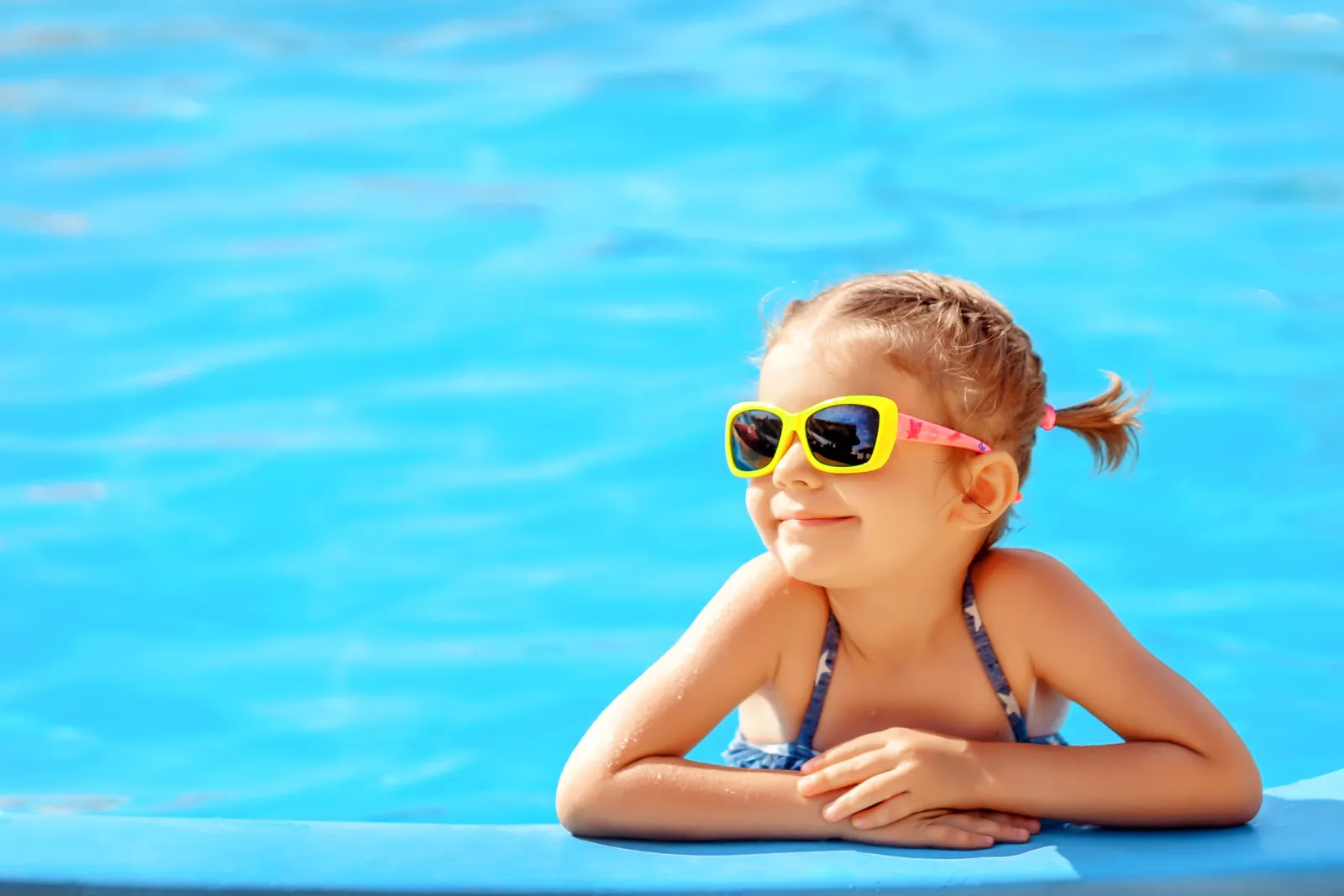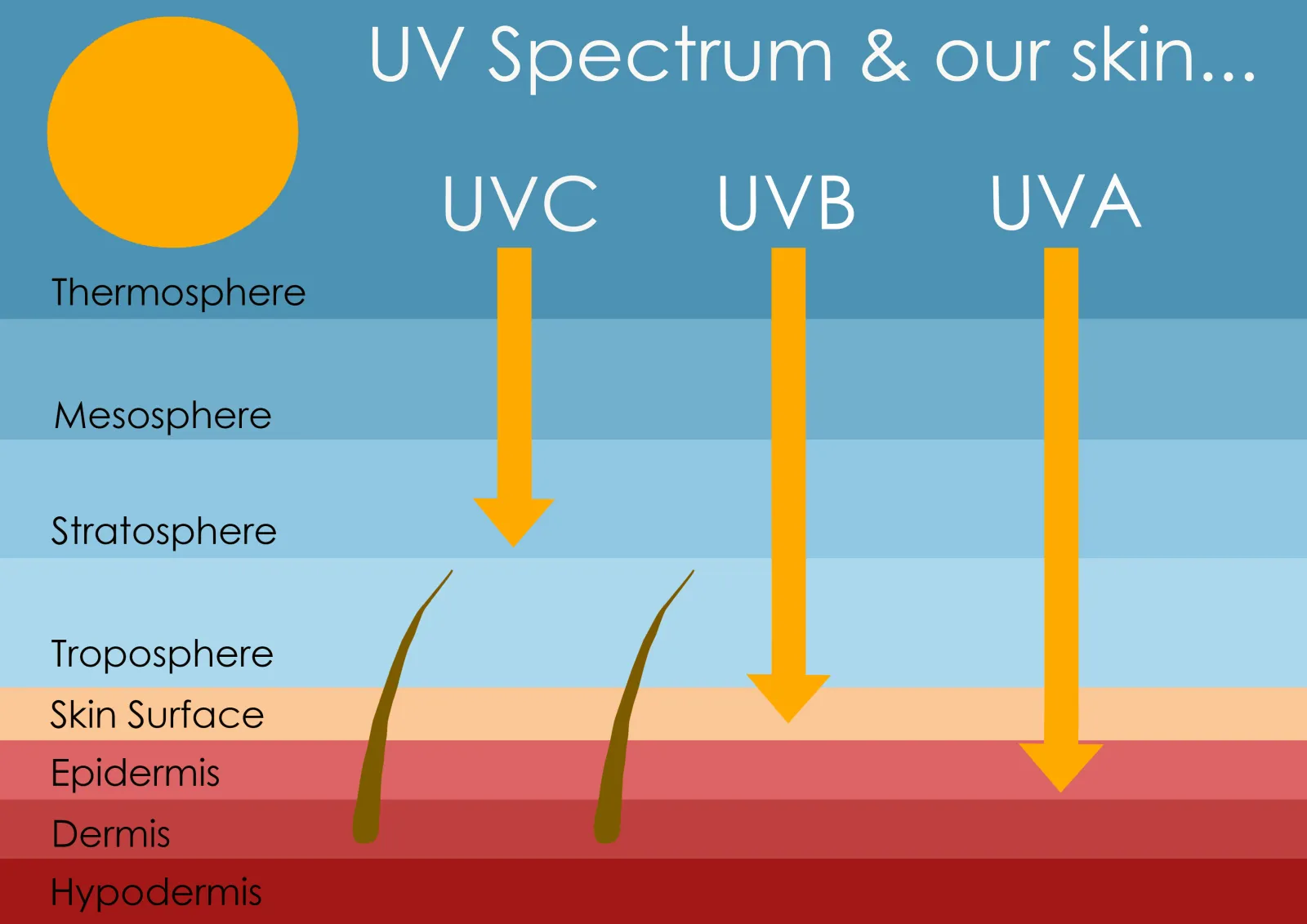
Because of the amount of time spent outdoors enjoying summer activities, July has been named Ultraviolet (UV) Safety Month by the US Department of Health and Human Services. Their goal is to spread the word about how important it is to protect your skin from the harmful effects of UV rays. We know that spending too much time in the sun can result in a sunburn, but what is it about sunlight that is harmful, and in what ways can it harm us? To answer that, we first need to understand what UV radiation is, and how it affects us.
What Is UV Radiation?
Most individuals don't realize that UV light is a form of radiation. By definition, radiation is the emission of energy from any source. Radiation has many different types, but UV radiation is a form of electromagnetic radiation. The main source of UV radiation is the sun, although it can come from man-made sources such as tanning beds and welding torches. Radiation exists across a spectrum from very high energy, such as x-rays and gamma rays, to very low energy, such as radio waves. UV rays have more energy than visible light, but not as much energy as x-rays.
The sun emits radiation in the form of UV light, which is classified into three types by wavelength: UVA, UVB, and UVC. They decrease in length from A to C, but increase in intensity, meaning that the shorter the wavelength, the more potential for damage.

UV radiation is at its highest when and where the sun's rays are the strongest. This means that UV levels will be highest around noon on a clear sunny day, even more so during the summer months. UV levels will also be highest near surfaces that reflect sunlight, such as snow or sand, and it's more pervasive at higher altitudes. Here are some quick facts about each of the three types of UV rays:
UVA Rays
- Account for 95% of the UV radiation that reaches the Earth's surface
- Used in tanning beds at amounts 10x - 13x higher than the sun
- Penetrates the second layer of skin (dermis)
- Causes wrinkles and premature aging of the skin
- Prevalent year-round at all times of the day
UVB Rays
- Primarily affects the top layer of skin and can cause burns in as little as 15 minutes
- Damages the collagen and DNA in your skin as weakening your immune system
- Causes cataracts, macular degeneration and other retinal disease
- Linked strongly to skin cancers, including melanoma
- Highest in intensity during Mid-May through fall between the hours of 10 a.m. and 4 p.m.
UVC Rays
- More energy than UVA or UVB rays, but do not get through the Earth's atmosphere
- Not normally considered a risk factor for skin cancer
- Found in man-made sources of UC radiation (mercury lamps, welding torches)
- Used in tanning beds in the past
Summer is the time of year we enjoy being outside the most - from picnics to pool parties, from beach trips to baseball - there are plenty of opportunities to have 'fun in the sun.' By remaining aware of how much time you are spending outdoors and wearing protective sunscreens and clothing to minimize UV exposure, you can be sure your summer will be one to remember for all the RIGHT reasons.
